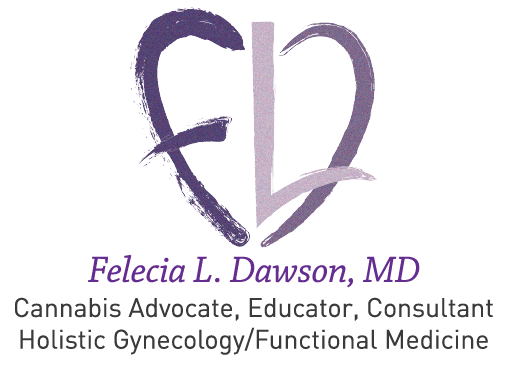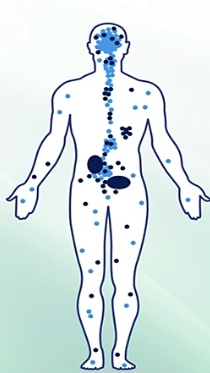Because life begins and ends in the gut.
Our gut microbiome is a massive community of bacteria, viruses and fungi that inhabit every crease and crevice of our gastrointestinal tract. This system significantly influences our metabolism, body weight, propensity to illness, immune system, appetite and mood. Most of these microbes live in the colon and outnumber all other cells in our body put together, 10 to 1. (1) This population of microbiota can weigh approximately 3 pounds- constituting trillions of microorganisms, and expressing more than 3 million genes.
The gut microbiome controls the storage of fat, assists in activating genes in human cells that absorb nutrients, contributes enzymes we don’t possess and makes essential vitamins (e.g. B12). It plays a role in the creation of blood vessels as well as breaking down metabolism byproducts and toxins. We ingest approximately one million microbes in every gram of food, therefore, our diet directly impacts which species thrive in our gut microbiome. That means when we make the switch from a meat-based to a more plant-based diet, our microbiome changes in a good way. (2)
The endocannabinoid system (ECS) regulates all of the other systems in our body (hormonal, nervous, immune, digestive, reproductive, etc.) This system makes cannabis-like molecules, endocannabinoids, that keep us in balance. The ECS is what cannabis interacts with inside our bodies and on the skin. Scientists have discovered that the ECS mediates the crosstalk between the body and brain via the gut microbiome.(3) This bi-directional collaboration via the vagus nerve oversees caloric intake, inflammation and the integrity of the gut barrier. A gut microbiome lacking in diversity or containing too many of the wrong kind of microbes, dysbiosis, is correlated with leaky gut. This condition is linked to chronic inflammation which in turn contributes to many chronic diseases including obesity and depression. A balanced ECS decreases gut permeability, keeps bad microbes out, promotes healthy weight and optimal mental health.(4)
Here are some ways, in no particular order, in which you can optimize your gut microbiome for optimal health, body, mind and spirit:
1. Eat a variety of seasonal fruit, vegetables, seeds and nuts. The health of your microbiome is directly related to its diversity. The more diverse your food is, the healthier your microbiome. Your plate should look like a rainbow. Phytonutrient and fiber content varies from plant to plant. Polyphenols are antioxidants that also act as fuel for microbes. Nuts, seeds, berries, olive oil, dark leafy vegetables and green tea all contain high levels of polyphenols. Pay special attention to high fiber vegetables. When undigested fiber makes it to the colon, beneficial bacteria use it as food (prebiotics) to make short-chain fatty acids (SCFAs). The cells lining our colon use SCFAs for fuel. SCFAs and other metabolites enter the bloodstream, traveling to other organs, where they act as signals for the brain-gut connection and regulate the immune system. High fiber vegetables include Jerusalem artichokes, onions, garlic and leeks. All vegetables are not created equally. For example, kale and mustard greens are more nutrient dense than iceberg lettuce.
2. Increase the intervals between meals by avoiding snacking, occasionally skipping meals and trying intermittent or extended fasting. This gives microbes time to rest and rejuvenate themselves.
3. Incorporate microbe-rich food and drinks into your diet. These include kombucha, sauerkraut, yogurt (including plant-based), kimchi, kefir or homemade ginger beer.
4. Stay away from artificial sweeteners like sucralose, aspartame and saccharine. These artificial sweeteners disrupt the metabolism of microbes and reduce gut microbiome diversity. They have also been shown to lead to obesity and diabetes in animal studies.
5. Avoid sugary and processed foods. These not only reduce the healthy strains in your gut microbiome, they help bad ones to flourish.
6. Take your vitamins. Ideally, we would like to get the majority of our nutrition from whole food, organic, plant-based sources. However, conventional agricultural practices have depleted our soil of micronutrients. Thus, produce grown in this soil may also be deficient. Our lifestyle may keep many of us from getting enough sunshine, the best source to generate vitamin D in the skin. Supplementing with magnesium, B complex, vitamins C and D can be beneficial. Omega 3 fatty acids derived from fish or algae promote a healthy microbiome.
7. Avoid overuse of antibiotics and hand sanitizers. These kill off the good and bad microorganisms. Soap and water still work!
8. Reduce alcohol intake. While it may increase the fun in social situations, remember it is liquid sugar and can be toxic in excess. It promotes inflammation, dysbiosis, leaky gut and decreases immune function. (5)
9. Play in the dirt. Healthy soil has a rich microbiome of its own. Gardening, outdoor activities and walking barefoot on the ground (or beach) is good for your microbiome. Studies show that people living in rural areas have healthier microbes than city-dwellers.
10. Get a dog. Studies show dog owners have a more diverse microbiome.
11. Consume toxin-free cannabis via a healthy delivery method. Healthier delivery methods include electronic vaporizers for dry flower, tinctures, capsules and edibles. Obese mice treated with tetrahydrocannabinol (THC) for four weeks resulted in a beneficial change in gut microbiota, decreased weight gain, fat mass gain and food intake. (6) A prospective study of human twins (7) demonstrated that symptoms of depression correlated with increased palmitoylethanolamide (PEA) via the stool and decreased gut microbiome diversity. Higher levels of PEA have been correlated with good mood. PEA is a an endocannabinoid that inhibits fatty acid amide hydrolase (FAAH), the enzyme that can breakdown anandamide and 2-Arachidonoylglycerol (2-AG), our two most abundant endocannabinoids. Anandamide, in particular, makes us feel good and is named after the Sanskrit word for bliss.
Dr. Dawson, CEO of P.L.A.N.T.S. for Lyfe, is a medical cannabis advocate, educator and consultant. She is co-author of a forthcoming book along with Oskii Chevanier, Jamaican Herbalist, COO and Marilyn Pierce, RN, CFO on holistic living using botanicals including cannabis. The acronym P.L.A.N.T.S stands for Plant-Based Lifestyle and Ancient Nutritional Treatment Strategies. P.L.A.N.T.S. for Lyfe is an evidence-based, educational platform to help people transition to a more plant-based lifestyle including CBD and cannabis.





